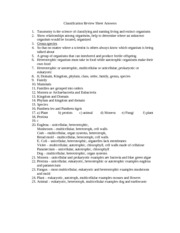Biochemical Evidence For Evolution Lab 12 Answers
Origins and biochemical evidence
By studying the basic biochemistry shared by many organisms, we can begin to piece together how biochemical systems evolved near the root of the tree of life. However, up until the early 1980s, biologists were stumped by a 'chicken and egg' problem: in all modern organisms, nucleic acids (DNA and RNA) are necessary to build proteins, and proteins are necessary to build nucleic acids - so which came first, the nucleic acid or the protein? This problem was solved when a new property of RNA was discovered: some kinds of RNA can catalyze chemical reactions — and that means that RNA can both store genetic information and cause the chemical reactions necessary to copy itself. This breakthrough tentatively solved the chicken and egg problem: nucleic acids (and specifically, RNA) came first — and later on, life switched to DNA-based inheritance.
Biochemical Evidence For Evolution Lab 12 Answers Questions
Another important line of biochemical evidence comes in the form of surprisingly common molecules. As you might expect, many of the chemical reactions occurring in your own cells, in the cells of a fungus, and in a bacterial cell are quite different from one another; however, many of them (such as those that release energy to power cellular work) are exactly the same and rely on the exact same molecules. Because these molecules are widespread and are critically important to all life, they are thought to have arisen very early in the history of life and have been nicknamed 'molecular fossils.' ATP, adenosine triphosphate (shown below), is one such molecule; it is essential for powering cellular processes and is used by all modern life. Studying ATP and other molecular fossils, has revealed a surprising commonality: many molecular fossils are closely related to nucleic acids, as shown below.
Evolution P a g e 1 LAB#23: Biochemical Evidence of Evolution Name: Period Date: Laboratory Experience #23 Worth 80 Lab Minutes Bridge If two organisms have similar portions of is, the more similar their proteins will be and the more closely related the DNA (genes), these organisms will probably make similar proteins. L Checked in answers for UP p. 1316 (Lab 26) l Lab: Biochemical Evidence for Evolution. Homework l Bring calculator. L Finish UP p.17A17F. 1316 Selective Answers. Hemoglobin is: protein, composed of amino acids, chemical molecule.
The discoveries of catalytic RNA and of molecular fossils closely related to nucleic acids suggest that nucleic acids (and specifically, RNA) were crucial to Earth's first life. These observations support the RNA world hypothesis, that early life used RNA for basic cellular processes (instead of the mix of proteins, RNA, and DNA used by modern organisms).
Biochemical Evidence For Evolution Lab 12 Answers
Biochemical Evidence For Evolution Lab 12 Answers Worksheets
